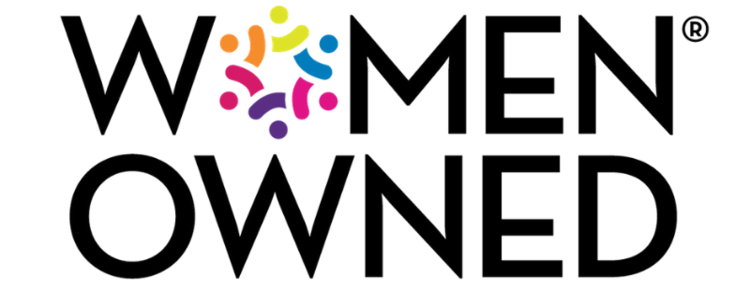Understanding Work Instructions vs. SOP
Companies often use Standard Operating Procedures (SOPs) and work instructions (or job aides) interchangeably, and that's fine: whatever your organization calls them is what they are. Typically, however, SOPs clearly describe specific processes to follow in designated situations or to produce desired outcomes. SOPs are vital documents that lay out the who, what, when, and where for important procedures in an industry or organization. Work instructions (or job aides) provide the specifics of how to complete a task; however, in many organizations, SOPs act as job aides and/or work instructions. Again, the real goal should be to use the terms consistently to avoid confusion.
The goals of SOPs and work instructions are to produce consistent results, ensure compliance, and help employees avoid injury, among other things. In theory, they save time and money and ensure tasks are completed efficiently and effectively. Regardless of what they're called, they must be clear, concise, easy to follow, which is where many organizations fail.
That said, you may be asking why we used "in theory." While well-written SOPs do all of these things (and more), poorly written SOPs can have the opposite effect.
For more information about the importance of SOPs and their meaning in maintaining quality, protecting the public and employees, and meeting compliance and security regulation demands, see our last blog or watch our video on the topic:
What are the benefits of SOPs?
- Reliability: Organizations want their operations to produce the best possible outcomes, but when workers follow haphazard methods for getting work done, outcomes will be all over the map. Think of SOPs as a recipe that guides readers to reliably cook up the best business results they can, every time.
- Consistency: This fits hand-in-glove with the point above: quality is often a function of consistency. There’s a reason international quality standards (like ISO 9001) require articulated procedures during the certification and credentialing process.
- Resiliency: One major (and often underappreciated) risk facing organizations is the loss of institutional knowledge as experienced workers retire or change jobs. SOPs ensure that this institutional knowledge remains intact inside the organization regardless of turnover.
- Teachability: SOPs make it much easier for new hires or existing workers taking on new tasks to learn their new job roles successfully and faster.
Ready for your team to write more effective SOPs?
Sign up for our SOP course today.
See Course Details
What are different kinds of SOPs?
-
Step-by-step. Probably the most common format for SOPs, these straightforward documents describe the process in incremental, iterative steps that users can follow one by one.
- Example: Support documentation for users is usually written to walk users through the steps they need to take to accomplish a certain function. If users need to learn how to use a piece of software or a machine, they’ll follow the same steps each time.
-
Flowchart. More common in engineering or technology applications, flowcharts are great when the process might vary depending on circumstances. In other words, the second step won’t always follow the first, as in a step-by-step process. Instead, the outcome of the first step might lead users in any one of multiple directions.
- Example: Customer support and troubleshooting processes are often based on a flowchart-style process. For instance, if a machine isn’t working, the first step might be turning it off and back on. Whether that works will determine the following step.
-
Multimedia. Some SOPs may take the form of visual illustrations or videos that explain and walk through the process for viewers. This can be an effective way to condense a lot of subject matter into an easy-to-consume format.
- Example: A video explainer can help employees know what to do if various situations arise, such as how to contact human resources or how to complete a task on their computer.
- Hybrid. Complex operating procedures can combine these approaches. For example, Step 1 alone might involve multiple decision points, so it might use a flowchart-style process before the user moves on to Step 2.
Work instructions.
Work instructions are related to SOPs but are more granular. In other words, if I’m writing an SOP about how to make a peanut butter sandwich and it includes five steps, I might break down one or more of the steps so that the user would know exactly how something is done.
For instance, if the first step is to open the jar of peanut butter, I could provide a work instruction that would tell the user exactly how to open the jar of peanut butter; it might even include information about where to retrieve the peanut butter jar.
The use of work instructions often depends on the complexity of the process, users' familiarity with it, and how often it's done, among other things.
Need an SOP for your SOPs?
Contact us for more information about our customized SOP course.
See Course Details
How can your team produce better SOPs?
Fundamentally, successful SOPs must be (1) easy to read and (2) easy to follow. Otherwise, no one will use them, which is a problem in and of itself.
Easy to follow means they use graphics that augment (not necessarily take the place of) text; lots of white space (the goal is NOT to cram the information together so that it's hard to read); numbering or bulleting as appropriate (numbers are used for when the sequence of steps matter; bullets are used otherwise); and headings and subheadings.
Easy to read means they use simple language (words that are one syllable, if possible); simple sentence structure (fewer words are generally better); and begin each step with a verb (SOPs indicate tasks, so this only makes sense).
Additional tips:
- Map the process. Use process mapping to figure out where the process should begin and end (while process mapping may seem like an extra step, it actually saves time because writers avoid including irrelevant steps in their SOPs).
- Fit the SOP to the need. Don't fall into the trap of thinking that all SOPs and/or writing instructions be presented in the same way; sometimes, a short video will do while in other cases a flow chart would work.
- Understand what an SOP is. Don't mistake SOPs or work instructions for guidance documents, checklists, or descriptions--all of these documents have their place, but they're distinctive documents.
- Organize the SOP. Be sure to include the appropriate sections in the appropriate order; for instance, if materials are required, that should be early in the document so that users know what they need to gather before beginning the task.
- Help the reader. Provide reading instructions by identifying terminology and acronyms and using numbering or bulleting as appropriate.
- Consider visuals. To start, use plenty of white space. This will make the documents easier on the eyes. Then, use illustrations where possible. As they say, a picture is worth a thousand words. Just don’t over-correct here: a picture absent any text can be just as confusing as too much text.
Ultimately, understanding the SOP definition is critical to producing a good document. Well-written, effective SOPs produce consistent results. If your organization’s SOPs don’t produce consistent results or aren't used, it may be because they're hard to use, hard to read, and hard to follow. If your organization is struggling with its SOPs, we can help.
Additional Resources
- Learn more about how SOPs can save time, money, and headaches … if they are well-written. Read now!
Make Your SOPs Work Better
Whether your team writes SOPs, work instructions, guidance documents, or checklists, we can help them hone their skills. Work instructions, SOPs, guidance documents, and checklists, like all scientific or technical writing, follow a certain “writing recipe,” and it’s one that the professionals at Hurley Write specialize in teaching. See Course Details


